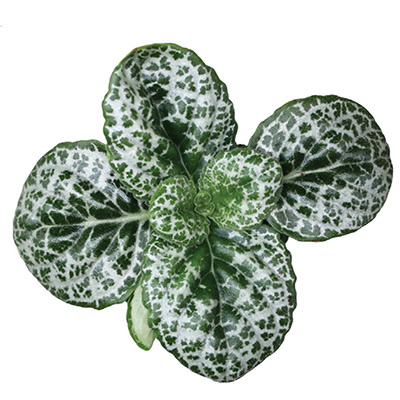Discovering Primulina dryas: A Unique Gem for Indoor Plant Lovers
Primulina dryas is a lesser-known but truly enchanting member of the Gesneriaceae family, prized for its velvety foliage and delicate blooms. Native to the limestone rock caves and forested mountains of southern China, this plant has recently gained popularity as a houseplant due to its compact size, ornamental leaves, and adaptability to indoor conditions.
Whether you’re a beginner looking for a resilient plant or an experienced indoor gardener hoping to explore something new, Primulina dryas is an excellent candidate. In this guide, we’ll explore its origins, key characteristics, and how to care for it to ensure it flourishes in your home.
Understanding Primulina dryas
Primulina dryas, formerly known under the genus Chirita, is a compact, rosette-forming perennial. It typically stays under 6 inches tall, making it ideal for small spaces or as part of a grouped plant display. The plant’s show-stopper feature is its leaves—deep green with a velvety texture, often exhibiting striking silver or pale green veining that adds depth and interest.
The flowers are another charming aspect. While they may be less frequent indoors, when they bloom, they produce dainty, tubular blossoms in shades of lavender or blue, often with yellow throats. These blooms resemble miniature orchids and add an extra layer of elegance to an already charismatic plant.
Native Habitat and Growth Behavior
In the wild, Primulina dryas thrives in shaded, humid environments along limestone cliffs, often in nutrient-poor soils. This background gives valuable insight into the ideal conditions to recreate indoors.
- Natural range: Guangxi and surrounding provinces in China
- Environment: High humidity, filtered sunlight, and excellent drainage
- Growth form: Compact rosette with slow to moderate growth
Ideal Growing Conditions Indoors
Light Preferences
Primulina dryas thrives best in bright, indirect light. Direct sunlight can scorch the delicate leaves, while too little light may cause the plant to become leggy or stagnate in growth.
Place it near an east-facing window or a few feet away from a bright south-facing one. Artificial grow lights can also be effective for ensuring steady growth, especially during darker winter months.
Soil Requirements
Good drainage is critical. Given its natural limestone habitat, Primulina dryas prefers a slightly alkaline, well-aerated soil mix. A good recipe includes:
- 50% African violet mix
- 25% perlite or pumice for drainage
- 25% crushed limestone or fine gravel
This mixture ensures that roots stay healthy, prevents rot, and mimics the plant’s native conditions.
Watering Practices
This plant dislikes sitting in water. Allow the top inch of soil to dry out before watering thoroughly. When you do water, try to avoid wetting the crown of the plant, as standing moisture there can cause rot.
A good watering routine is to:
- Water when the top 1–1.5 inches of soil are dry
- Use room-temperature water
- Ensure pots have proper drainage holes
During winter, reduce watering frequency as growth slows and the plant enters a semi-dormant phase.
Humidity and Temperature
Primulina dryas appreciates moderate to high humidity. Aim for a humidity level of 50% or higher, especially in heated indoor environments where air can get dry.
Tips for maintaining humidity include:
- Placing the pot on a pebble tray with water
- Grouping it with other humidity-loving plants
- Using a room humidifier if needed
Temperature-wise, this plant is happiest between 60°F and 75°F (16°C to 24°C). Avoid exposing it to drafts or sudden temperature changes, which can stress the plant.
Propagation and Repotting Tips
Propagation Methods
Primulina dryas is easy to propagate through leaf cuttings or by dividing offsets from a mature rosette. Leaf propagation is a slow but rewarding process:
- Cut a healthy leaf with a small portion of the petiole (leaf stem).
- Insert it into a lightly moistened propagation mix: 50% perlite, 50% peat moss or coconut coir.
- Keep it in a warm, humid environment with indirect light.
- In a few weeks, roots and eventually new miniature rosettes will form at the base of the cutting.
When and How to Repot
Repotting is generally needed every 1–2 years or when the plant becomes rootbound. Choose a pot only slightly larger than the current one to prevent overwatering issues. Spring or early summer is the best time to repot.
Steps for repotting:
- Gently remove the plant and shake off old soil
- Inspect for any root rot and trim affected roots
- Replant into fresh, well-draining soil mix
Common Issues and How to Avoid Them
Leaf Yellowing or Browning
Usually a sign of overwatering, poor drainage, or underwatering. Check soil moisture and ensure the pot drains freely. Also, make sure the plant isn’t in direct sun during hot periods.
Powdery Mildew or Mold
May appear in overly humid or stagnant conditions. Improve air circulation and avoid misting directly onto the foliage. Removing infected leaves can prevent spread.
Weak Flowering or No Blooms
While not all Primulina dryas plants bloom frequently indoors, a lack of flowers usually points to low light or nutrient deficiencies. Ensure adequate lighting and fertilize with a diluted balanced houseplant fertilizer every 4–6 weeks during active growth.
Why You Should Add Primulina dryas to Your Collection
This modest yet visually striking plant is a hidden gem among houseplant enthusiasts. It offers:
- A unique texture with its velvety foliage
- Delicate, long-lasting flowers with elegant color
- Compact growth perfect for apartments or small shelves
- Low maintenance needs, ideal for beginners
Its adaptability and manageable care routine make it a terrific option for those wanting to branch out from more common houseplants like pothos or snake plants.
Conclusion
Primulina dryas may not be a household name—yet—but its remarkable beauty and relatively easy care requirements make it a worthy addition to any indoor garden. Whether you’re a curious beginner or a seasoned collector looking for something a bit off the beaten path, this charming plant delivers both visual interest and botanical intrigue.
By mimicking its native habitat with the right light, humidity, and soil conditions, you can enjoy a healthy, thriving plant that rewards you with lush foliage and delicate flowers. With a little care and attention, Primulina dryas will flourish and become a conversation piece in your home for years to come.
References
- GRC Gesneriad Reference Collection. (n.d.). Primulina dryas. Retrieved from https://www.gesneriads.info/plant/primulina-dryas/
- Burtt, B. L. (1977). Studies in the Gesneriaceae of the Old World: XXXIV. A new species of Chirita and some nomenclatural changes. Notes from the Royal Botanic Garden Edinburgh, 36(2), 301–311.
- Xu, W. H., & Michelangeli, F. A. (2011). Revision of Primulina, a formerly polyphyletic genus (Gesneriaceae). Systematic Botany, 36(3), 972–987. https://doi.org/10.1600/036364411X583505








